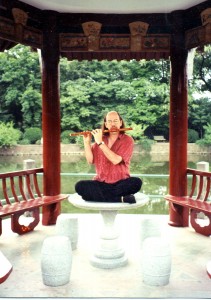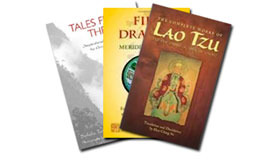Coming Home to Daoism
0 Solala’s Blog for the week of 2/4/13
Solala’s Blog for the week of 2/4/13
I encountered Daoism after struggling with a long illness (CFIDS for over ten years, until I was completely bed-ridden) and was curious as to the philosophical background to the acupuncture treatments I was receiving. I had been studying Zen for some time but there was something about the stiffness and solemness of Zen that I was not satisfied with. I had studied Eastern thought since the ’60’s and had practiced yoga and meditation for many years. But it was when I discovered Daoism, through the books of Hua Ching Ni, that I really felt a sense of ‘coming home.’
Here was an approach to health, spiritual cultivation and a deep understanding of how energy works in our body and how to create a deep connection to the universe, or Dao. I read Master Ni’s books with great interest and began looking at the Daode Jing (Tao Te Ching) with renewed interest. I began studying Taiji (Tai Chi) with a local Chinese teacher. To my great good fortune, he also happened to be a Daoist, something actually quite rare in Taiji instructors in the West.
I loved how grounded the practices were, how they fostered a deep connection to the earth and to the greater nature that surrounds us. Chinese herbs got me out of bed and qigong cured me of CFIDS, a condition for which there is no cure in Western allopathic medicine.
At this point, my whole life is informed by my Daoist studies, every desicion I make about my life is influenced by the ancient and not so ancient Daoist masters like Laozi (Lao Tzu) and Zhuangzi (Chuang Tzu). I am very blessed by the fact that I make my living writing about and teaching the Daoist arts.
Many people, upon reading my first book on Daoism, Embarking on the Way, have come to me to tell me that they must be Daoists, tho they never had a name for it! For all of their life they have been non-joiners of any organized religion, have always used nature as their teacher and can resonate very deeply with the poetry of the Daoist way.
What many people don’t realize is that there are two very distinct branches of Daoism today, daojiao and daojia. Daojiao is the newer (late Han dynasty) form of religious Daoism, very much involved with priestly functions and heavily influenced by Buddhism. The other is the original philosophy of Laozi and Zhuangzi and is the one most favored by Western students.
I will be exploring both branches in the coming months. For now I just want to say welcome to new readers/students to this site, dedicated to the path of Dao, the path of oneness, the path of deep connection to the earth and all living things (the ten thousand beings that Laozi speaks about), to the path of living in a balanced and healthy way, to the joy and excitement of connected deeply to the ancient as well as modern masters of Dao.
Laozi describes the follower of Dao like this:
Yield and become whole.
Bend and become straight.
Empty yourself and become filled.
Grow old yet become renewed.
Have little yet acquire much.
Possess much yet become confused.
The sage embraces the one
and becomes a model
for all under heaven.
She is not aggressive
and so she is able to achieve greatness.
She does not boast
and so she is recognized by all.
She does not contend with anyone
and so no one under heaven
contends with her.
The ancients said “Yield and become whole.”
Is this an empty saying?”
Become whole and you will be restored to Dao.
Chapter 22


Comments